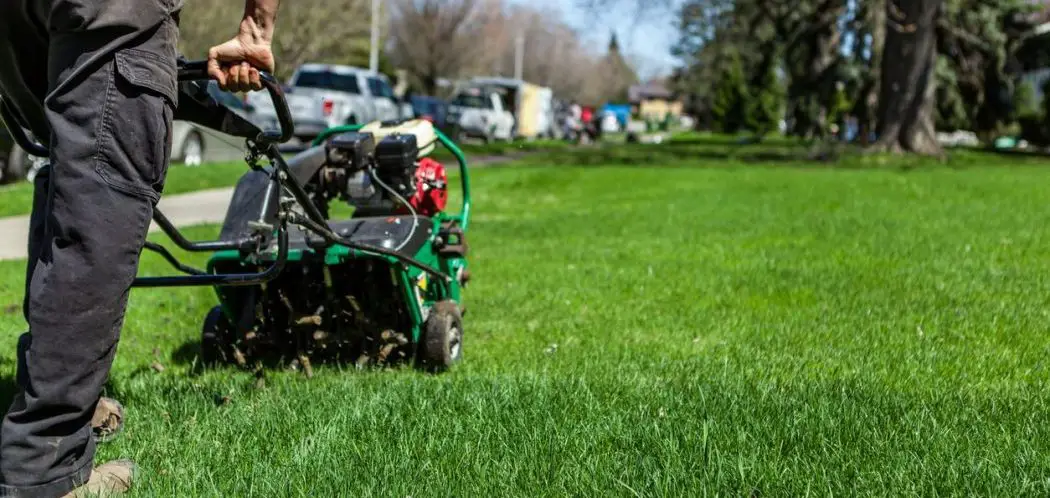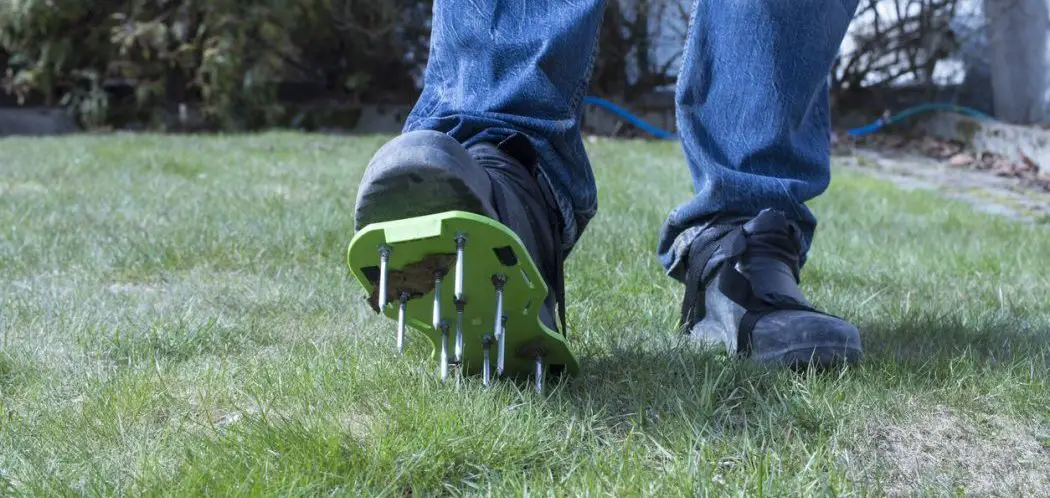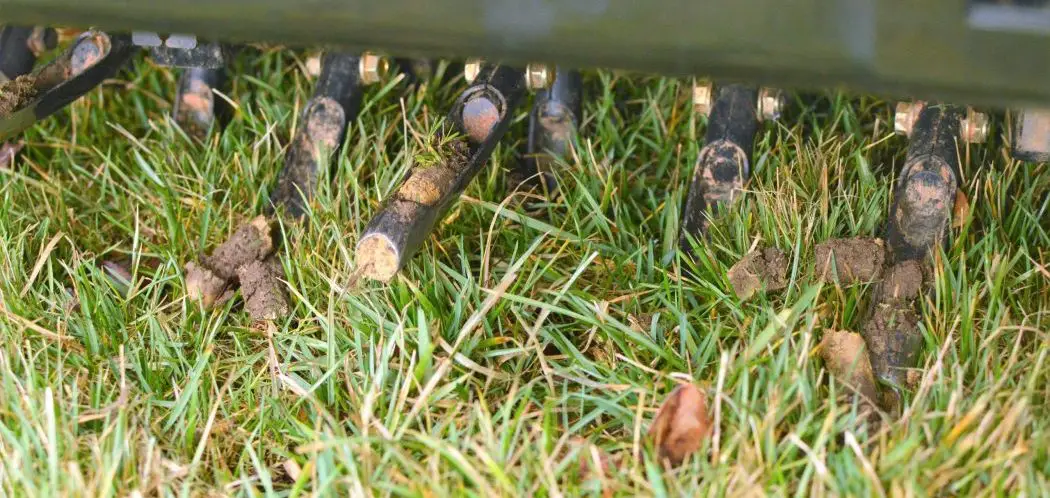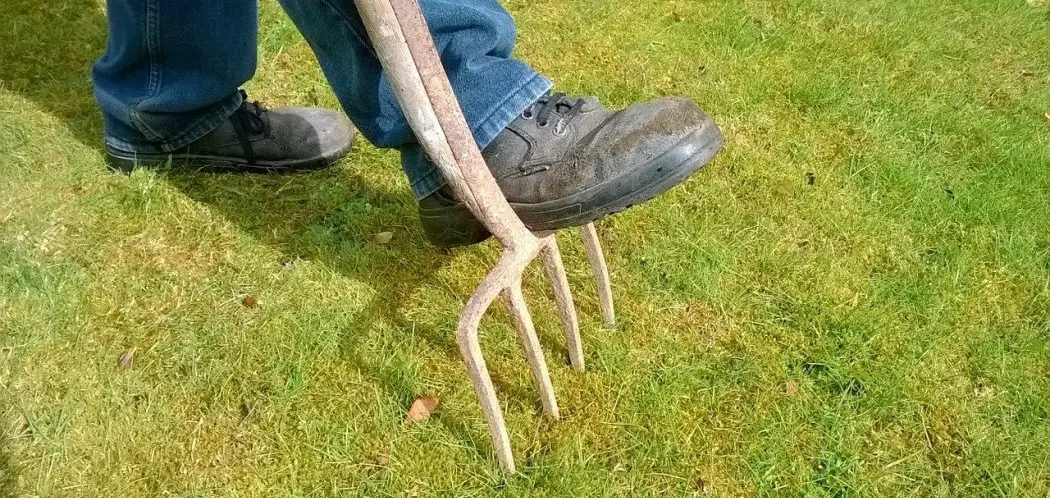A scarifier and an aerator are both yard tools. Although they are used for different slightly different things, the goal of using both is to improve the health of your lawn.
In this article, I’ll explain why we use each tool, when to use them and the difference between the two.
Scarifying
A lawn in need of scarification will have a layer of moss or other organic material such as dead grass, leaves and roots. You may even be able to see this layer if you look closely. This layer is known as thatch, and it can become a problem for the look and health of your grass if it gets too thick. It prevents the root system from getting air, water and nutrients. It also makes it difficult for the fertilizer you put down to be used by your lawn effectively.
In order to get an idea of the amount of thatch you have, you can try digging out a small sample and look for a layer of dead grass. The depth of scarification that’s need can vary quite a bit.
What Is a Scarifier?
A scarifier is a machine that you push around your yard, in a similar way to pushing a mower.
Instead of cutting the grass, a scarifier has sharp blades that rotate at a high speed and cut into the turf at a vertical angle. It helps to remove the thatch from your lawn, allowing air, water and nutrients to get down into the roots.
After you scarify, you’ll end up with a blanket of churned up thatch sitting on top of your grass. You’ll need to remove this by raking.
You may want to repeat the process again from another angle. This is just to be thorough, and ensure as much of the thatch is removed as possible.
Which Scarifier Is Recommended?
I like this electric scarifier from Sun Joe (link to Amazon). It works great for small to medium sized lawns.
After you’ve completed the scarification process, don’t be surprised if your lawn looks a lot worse than when you started. Your grass will probably look a lot finer and you’ll often see some bare patches too. This is totally normal and you don’t need to worry. Once your lawn recovers, you will start to see some really great results.
When to Scarify
It’s very common for lawn owners to scarify before reseeding. This provides the new grass seed with the best possible environment to thrive in. You may want to only seed certain areas, or you might choose to reseed the entire lawn.
Alternatives to a Scarifier
There are alternatives to using a lawn scarifier. Some people find it to be a little rough on the grass and choose to use a dethatching rake instead. While using a rake can still yield great results, it takes a lot of time and its very hard work too!
I like this one (link to Amazon). It has curved tines which work great for pulling up lawn debris.

Aerating
When you aerate your lawn, you’re trying to reduce the amount compaction in the soil.
Compaction can occur through a variety of ways. It may be from water weight, or too much foot traffic from animals or children. Pushing a heavy lawn roller around your yard can also cause a lot of compaction too.
The amount of compaction you may have will also depend on your soil type. Certain soil types tend to compact more than others.
Aeration helps to open the soil back up and allows water, air nutrients to get down into the root system.

What Is an Aerator?
A lawn aerator is a yard tool that creates holes in the soil to reduce the amount of compaction.
There are a few different types of aerators, some are more effective than others.
Some people like to use aerator shoes but I find these not to be very effective, nor practical. The shoes have spikes that stick into the ground. I find it’s hard to get your feet out sometimes. It’s also going to require a lot of walking to have much of an effect because your lawn needs a lot of aeration for it to do any good.
I much prefer to use a mechanical aerator. These machines have sharp, hollow tines that rotate into the ground and pull out tiny plugs of soil.
I’d always recombined keeping a hand aerator (I like this one). Hand aerators are great for areas that are hard to reach. You can also use it to take a soil sample.
You can aerate yourself or hire professional to do it for you. If you do want to give it a go on your own, you can rent an aerator first to see if its right for you.
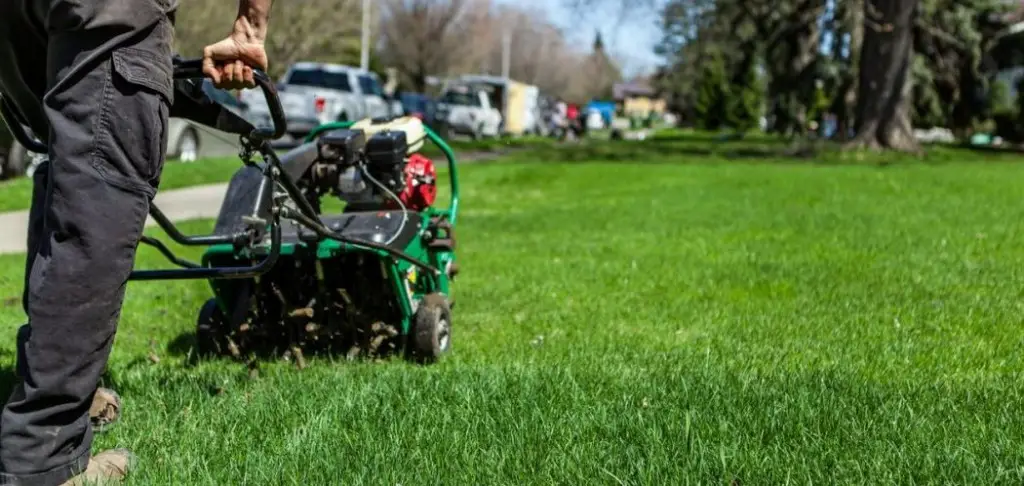
When to Aerate
Dry soils are very hard, so I’d recommend aerating after it rains when the soil is a little loose.
You can check for compaction using a penetrometer (I like this one). Otherwise you could just use a knife to see if the soil is hard or not. If you’re able stick it in to the ground without much difficulty, the soil is probably not hard enough to worry about aerating.
You should try and aerate your lawn when it’s under the least amount of stress and this will depend on your grass type.
If you have a cool season grass, the best time to aerate is in the fall. For those of you out there with a warm season grass, its best to aerate in the early summer or springtime.
In Summary
A scarifier and an aerator are two different tools used for two different reasons. A scarifier is used to dethatch your lawn, while an aerator is used to reduce compaction in the soil.
They both try to help to get as much air, water and nutrients down into the root system as possible.
I wouldn’t recommend using an aerator more than once a year. There’s no need to do this if your lawn doesn’t need it.
There are some arguments against using a scarifier. Some people like the mulching benefits that you get from keeping the nitrogen and nutrients that reside in the grass. If you pull the thatch layer off, you may miss out on some of the natural fertilization benefits. In order to mulch effectively, you will need to make sure you have the right type of mower.
I’ve found that dethatching is good in moderation. If you have a tremendous amount of thatch, it’s better to remove it so that you aren’t smothering your lawn. There are pros and cons to dethatching so you’ll need to work out what’s best for your situation.


